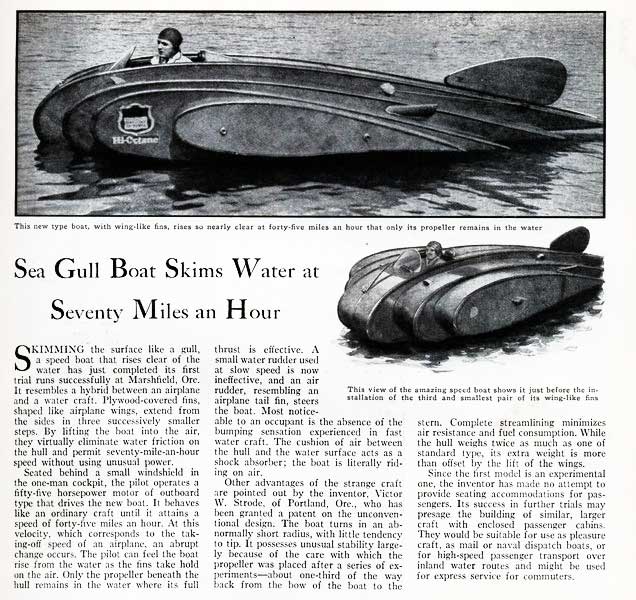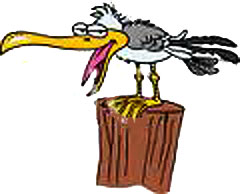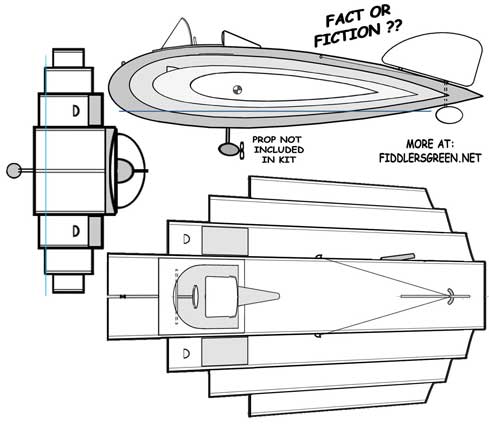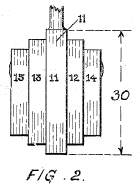


Sea-Gull-Flying-Boat - $$7.50
A bold and fascinating Flying Boat experiment. Nothing to do with a sea gull pretty much but lots to do about flying in ground effect-a concept evidently little understood back in 1933. It flew (perhaps!) but for all the wrong reasons.. A fun and easy to build retro card model guaranteed to be a conversation piece.
 |
Sea Gull Flying Boat
Looked at the Sea Gull "flying boat". My vote is it would never "fly." Bob D
That would make a swell control line model.......start with a 1/2 A Cox engine! YB Duck of Sector X
I think this is just a boat, never intended to fly but to 'plane' on the top of the water. You could extend the outer sponsons into a lovely 30s style wing planform but how would you power it? Perhaps a pod mounted engine a la Sikorsky? Martin
Interesting. Should make a cool model!... in the catagory of......"Its a Boat!!..Its a plane!!..Its a ???" The question is.....If the propeller is still in the water.........is it a plane?? HUMmmm...Bob
Hi! Writing to you from New Zealand where I came across your website. With regard to the Seagull and the idea of high-speed "flying-boats" being propelled by water propellors, I refer you to the author Rudyard Kipling's story "With the Night-Mail" an early science-fiction story (Steam-punk enthusiasts take note) about a regular airship flight across the North Atlantic. He published this story as an imitation magazine article which includes pseudo-advertisements for "Bat-boats" which seem to use the same principle as the Seagull. The story is published in Kipling's collection "Actions and Reactions" - Cheers, Mike Jackson.
I don't know if anyone actually tried this but Thomas Sopwith (of Camel fame) named his first (the first) amphibious aeroplane, the Sopwith Batboat. It was a fully flying 'plane however. - Mike"
Mike: We have that model too. The Sopwith Batboat can be found Here - YMP Scott
 |
While searching the 'net for info about seagulls for the Herring Sea Gull project, way down deep into Google this fascinating little invention begged to have a cardmodel made of it. Even more fun is to study it knowing what we know some 80 years later. The inventer and builder, Mr Victor W. Strode of Portland Oregon, might have stumbled upon the powerful 'ground effect(GEV) concept without even realizing its full impact..Ditto for Hydrofoils. (after all,, it was 1933)
|
 The Sea Gull Flying Boat was built of marine plywood at Marshfield Oregon, and there's a connection here...
The Sea Gull Flying Boat was built of marine plywood at Marshfield Oregon, and there's a connection here...
During World War II the Marshfield (Coos Bay) plant manufactured marine plywood for PT boats and interior plywood, panels, doors, and bulkheads for the construction of hundreds of Liberty Ships made by the US Maritime Commission. The plant made aircraft plywood and cut and shipped special birch veneer to Britain for use in construction of the famed De Havilland Mosquito Bomber. The veneer for the bomber was so thin that it could not be dried by mechanical means, but rather had to be hung
by wires to air dry. At least 90% of the production of the Marshfield plant during WWII was devoted to the war effort. Among later contracts awarded to the Marshfield plant was the manufacture of the aircraft plywood used to construct Howard Hughes’ HK-1 Flying Boat also known as the Spruce Goose.. The 'trail runs' for the Sea Gull Flying boat are reported to be conducted in the bay east of Coos Bay
'SeaGull' Experimental Flying Boat

|
The properties of wings and propellers are strongly influenced by the shape of the airfoil sections selected by the designer. Perhaps the most well known section of all time is Clark-Y. To quote Ron Warring from his book "Airfoil Sections", price 2 shillings in 1946: "This is one of the most popular sections among modellers all over the world, and is also used as an airscrew section. It has the advantage of making a wing easy to construct, and the performance has all-round merit. " "In turbulent flying conditions, Clark-Y is as good or better than modern laminar flow sections" |
|
Clark-Y is the name of a particular airfoil profile, widely used in general purpose aircraft designs, and much studied in aerodynamics over the years. The profile was designed in 1922 by Virginius E. Clark. The airfoil has a thickness of 11.7 percent and is flat on the lower surface from 30 percent of chord back. The flat bottom simplifies angle measurements on propellers, and makes for easy construction of wings on a flat surface. |
|
|
|
The benign stalling characteristics of the airfoil are another aid, as this allows an inexperienced radio-control model hobbyist a better possibility of recovering from a stall in flight, to the benefit of the model. The depth of the section lends itself to easier wing repair, as the modeller will often then have better access to balsa structural elements. In addition, the Clark Y section's depth also permits the flush installation of what are considered "standard" sized R/C servo motors within a wing for actuation of ailerons, flaps etc. , without an excessive reduction in performance. |
 The Sea Gull Flying Boat comes in two sizes (largest is about 10" long) with great instructions. Other flying boat models: Hansa-Brandenburg, Sikorsky S-38, Sopwith Tabloid, Piper Cub, DeHavilland Beaver, Grumman Goose, Grumman Duck, Kingfisher, and many OTHERS ! |
|
 |
 |
 |
 |
Victor Strode took out a patent that presented his winglet concept as wing floats. Patent info |
||
 |
||
 |
||
Curious how this drawing shows just two 'winglets' instead of three. Perhaps the most honest image shows a 'future' Flying Gull type just house-boating around and probably not doing that too well on the narrow and flat center section. |
||
| We have a wonderful (even perhaps prize-winning) Herring Sea Gull model just a click away. This model is a glider and really flys !! | ||
Additional Historical Insights
Victor W. Strode, an inventor from Portland, Oregon, patented his "aerohydrocraft" in 1933, blending airplane and boat elements. The Sea Gull was 24 feet long, built of marine plywood, and powered by a flathead Ford V-8 engine—likely underpowered for sustained flight. Trials occurred in Coos Bay, Oregon, where it may have skimmed the water using unintended ground effect principles. Strode, likened to a "real-life Tom Swift," had other inventions, but the Sea Gull's success was limited, possibly due to engine constraints. (offbeatoregon.com)
This era saw flying boat innovations, like Glenn Curtiss's 1912 designs with hulls instead of floats, influencing later models such as the Sikorsky S-38. (fliphtml5.com)
Fun Trivia
- Strode's craft drew comparisons to fictional "bat-boats" in Rudyard Kipling's stories, emphasizing its quirky hybrid nature.
- The Marshfield plant's plywood later supported WWII efforts, including PT boats and the Spruce Goose.
- Users speculate it could work as a control-line model with a small engine, like a 1/2A Cox.
Model Building Tips
For the larger 10-inch version, reinforce the hull with cardstock layers to mimic plywood strength. Test ground effect by building a small ramp for launches. Customize with period decals or a miniature Ford engine detail for authenticity.
Email your comments to: info@fiddlersgreen.net




 The Lockheed Vega is one example of the Clark Y used in practice. For many applications the Clark Y has been adequate; it gives reasonable overall performance in respect of its lift-to-drag ratio, and has gentle and relatively benign stall characteristics. But the flat lower surface is sub-optimal from an aerodynamic perspective, and it is rarely used in new designs. Additionally, the Spirit of St. Louis and the Piper Cub use the Clark Y.
The Lockheed Vega is one example of the Clark Y used in practice. For many applications the Clark Y has been adequate; it gives reasonable overall performance in respect of its lift-to-drag ratio, and has gentle and relatively benign stall characteristics. But the flat lower surface is sub-optimal from an aerodynamic perspective, and it is rarely used in new designs. Additionally, the Spirit of St. Louis and the Piper Cub use the Clark Y.
 Model Aircraft
Model Aircraft